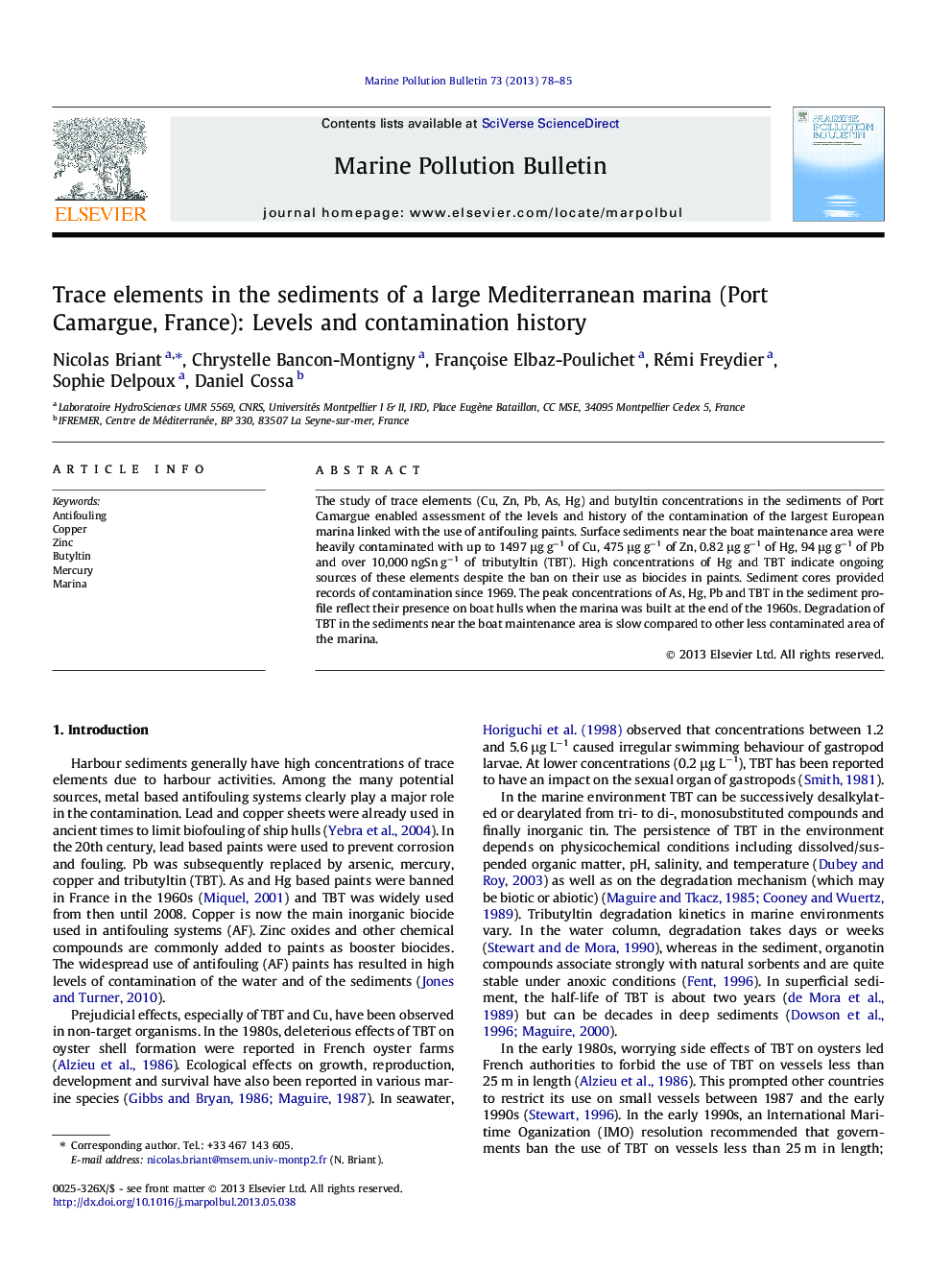| Article ID | Journal | Published Year | Pages | File Type |
|---|---|---|---|---|
| 6359403 | Marine Pollution Bulletin | 2013 | 8 Pages |
Abstract
The study of trace elements (Cu, Zn, Pb, As, Hg) and butyltin concentrations in the sediments of Port Camargue enabled assessment of the levels and history of the contamination of the largest European marina linked with the use of antifouling paints. Surface sediments near the boat maintenance area were heavily contaminated with up to 1497 μg gâ1 of Cu, 475 μg gâ1 of Zn, 0.82 μg gâ1 of Hg, 94 μg gâ1 of Pb and over 10,000 ngSn gâ1 of tributyltin (TBT). High concentrations of Hg and TBT indicate ongoing sources of these elements despite the ban on their use as biocides in paints. Sediment cores provided records of contamination since 1969. The peak concentrations of As, Hg, Pb and TBT in the sediment profile reflect their presence on boat hulls when the marina was built at the end of the 1960s. Degradation of TBT in the sediments near the boat maintenance area is slow compared to other less contaminated area of the marina.
Related Topics
Physical Sciences and Engineering
Earth and Planetary Sciences
Oceanography
Authors
Nicolas Briant, Chrystelle Bancon-Montigny, Françoise Elbaz-Poulichet, Rémi Freydier, Sophie Delpoux, Daniel Cossa,
